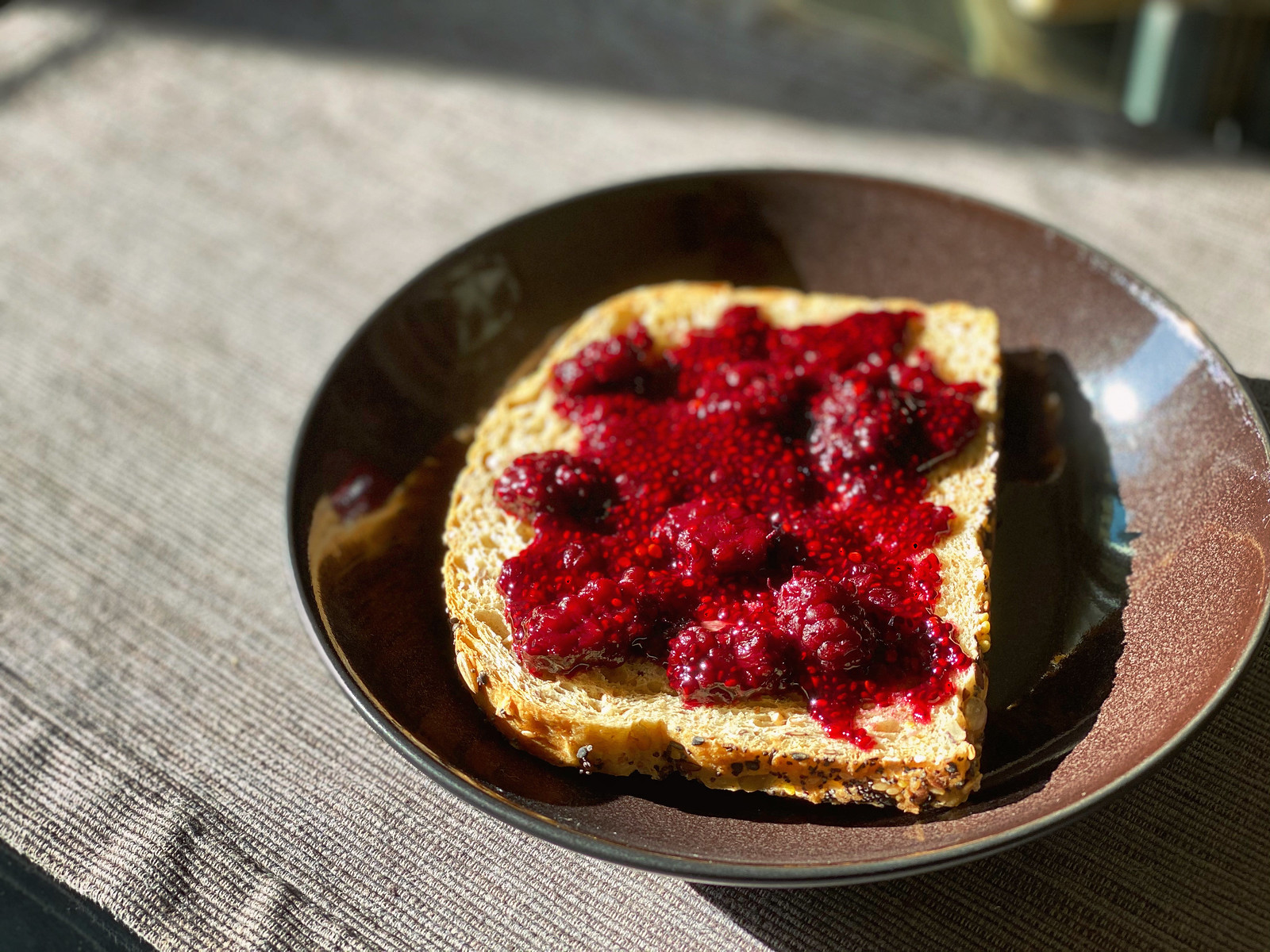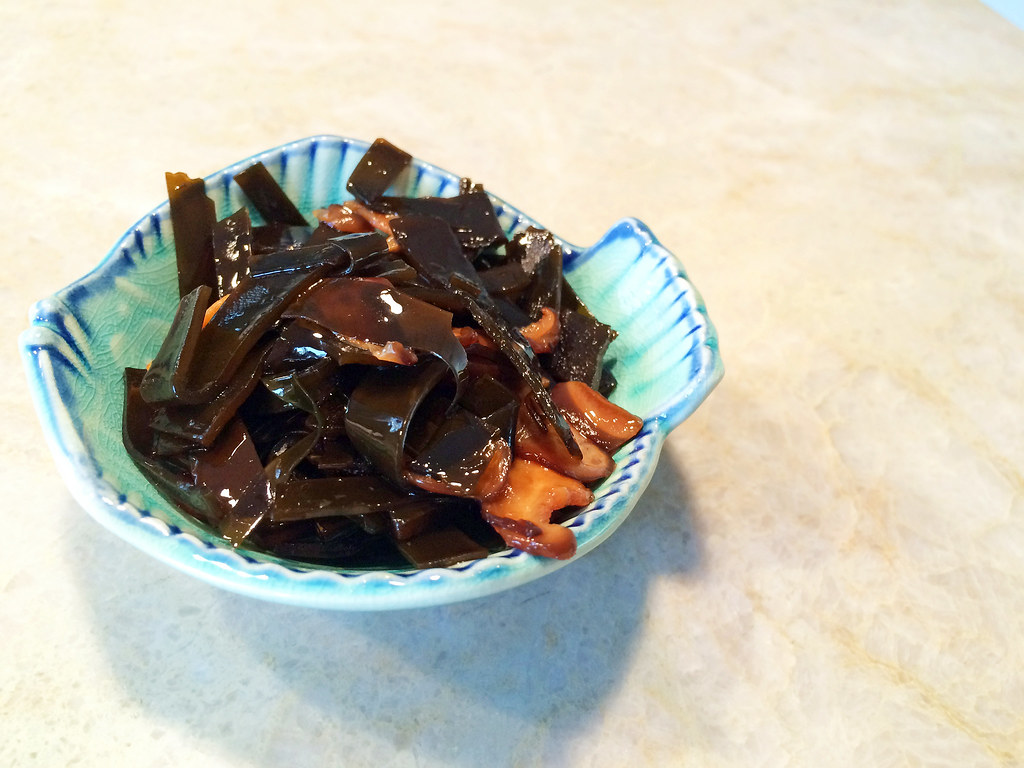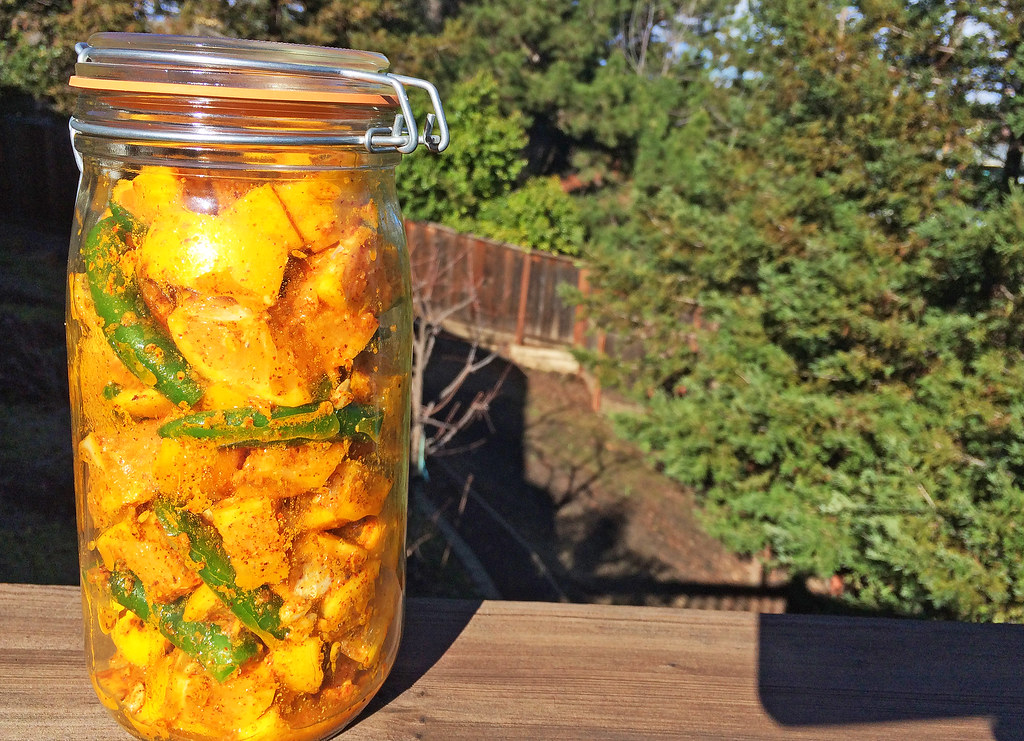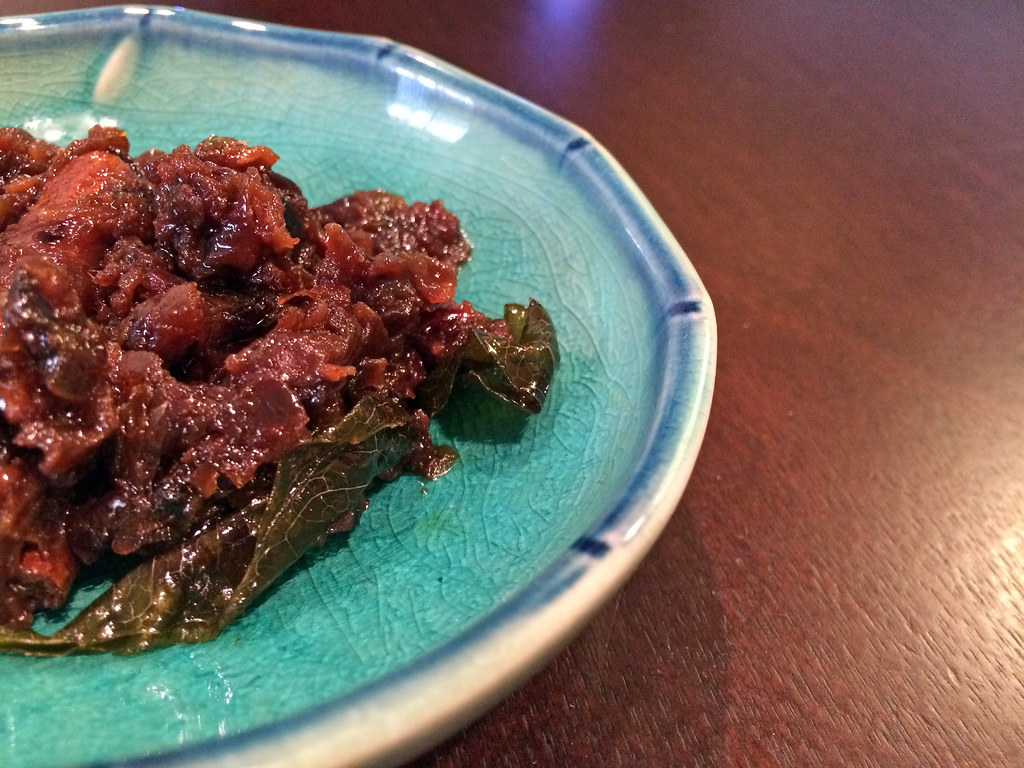My parents have a giant shahtoot (Persian mulberry) tree and every year, we look forward to staining our fingers (and our clothes) from picking the juicy, crimson berries. This year, I used some to make a fresh, not-too-sweet and super healthy jam. Paired with hibiscus, this jam comes together in minutes and is bound by chia seeds. I use sugar very sparingly here, so this is a jam that won’t keep forever, even in the fridge. (Don’t worry, it won’t last long anyway.)

Ingredients:
1/3 cup dried hibiscus flowers
1 1/4 pound (about 1 1/2 pints) Persian mulberries
4 tablespoons chia seeds
4 tablespoons honey
2 tablespoons sugar
1. Put the hibiscus in a heatproof bowl and cover with 1/2 cup boiling water. Let steep for 10 minutes. Strain to remove the dried flowers, pressing down to release their flavor.
2. Put the mulberries in a saucepan and slowly heat, roughly crushing the berries with the back of a wooden spoon. Bring to a boil, reduce the heat, and simmer gently for about 10 minutes, until the juices have run. Stir in the chia seeds and hibiscus water, then cook for another minute. Add honey and sugar, tasting to adjust if needed. Remove from heat and set aside to cool and thicken. Cover and store in the fridge.




